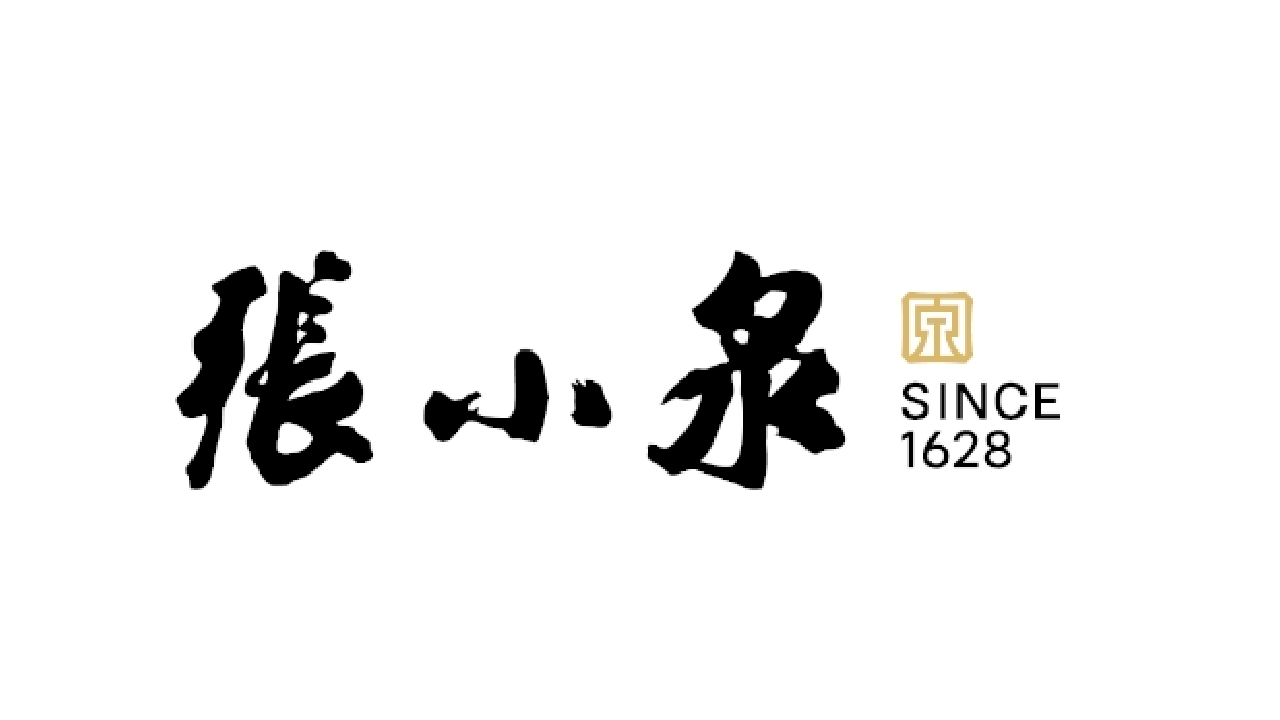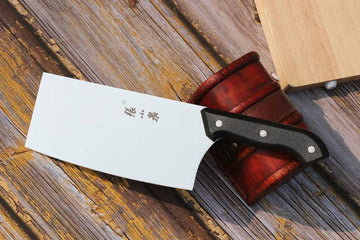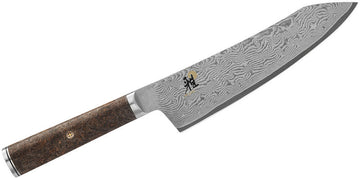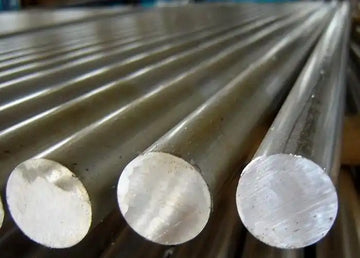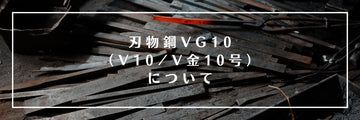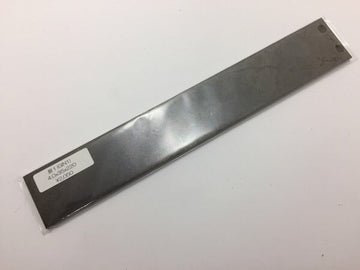In the world of kitchen knives, 3Cr13(30Cr13) stainless steel is like that basic economy car - nothing fancy, but it gets you where you need to go without breaking the bank. This Chinese stainless steel has become the foundation of entry-level kitchen cutlery by providing decent performance at an extremely accessible price point. With about 0.3% carbon and 13% chromium, it prioritizes rust resistance and affordability over high-end cutting performance, making it a practical choice for budget-conscious cooks and commercial kitchens.
What 3Cr13 steel is made of
The name "3Cr13" tells us the basic ingredients in this steel recipe:
- The "3" indicates about 0.3% carbon content, enough for basic hardness but not for premium edge retention
- "Cr13" means it contains approximately 13% chromium, just enough to qualify as stainless steel and provide good rust resistance
- It also contains small amounts of manganese and silicon to improve the steel's basic properties
Unlike more expensive steels, 3Cr13 doesn't contain specialty elements like molybdenum or vanadium. It's a simple, straightforward formulation designed to be economical while maintaining essential stainless properties. Think of it as a basic recipe using common ingredients rather than exotic spices.
How 3Cr13 steel performs in kitchen knives
Edge retention and cutting ability
With its modest carbon content, 3Cr13 typically achieves a hardness of 50-55 HRC, which is softer than most higher-end knife steels. This means it won't hold its edge as long as premium options. You'll notice it dulling more quickly, especially when working with tougher ingredients or doing high-volume prep work.
In practical terms, 3Cr13 knives retain about 85% of their sharpness after processing 5 kg of vegetables, and in commercial kitchens, they typically require resharpening every 8-10 service hours. While not impressive compared to premium steels, this performance is sufficient for casual home cooking and light kitchen tasks.

The trade-off for this modest edge retention is exceptional ease of sharpening. With fewer and smaller carbides in its structure, 3Cr13 responds quickly to sharpening on even basic stones or pull-through sharpeners. This means even beginners can easily restore the edge when needed - a practical advantage for those new to knife maintenance.
Corrosion resistance and durability
Where 3Cr13 truly shines is in its corrosion resistance. The 13% chromium content creates a protective barrier that stands up well to moisture, most food acids, and even dishwasher cycles. This makes it particularly user-friendly for beginners or in busy kitchens where immediate knife care might be overlooked.

This corrosion resilience means you can be more relaxed about maintenance. While it's still best to hand wash and dry promptly, this steel forgives the occasional neglect that would quickly rust carbon steel or even some lower-chromium stainless options. 3Cr13 knives are unlikely to develop serious rust issues even after exposure to acidic ingredients or slightly damp storage.
The steel also offers reasonable toughness for a budget option. Its more moderate hardness makes it less brittle than harder steels, so while it may dull more quickly, it's less likely to chip or crack under stress. This practical durability makes it suitable for environments where knives might see rougher handling or occasionally encounter bones.
3Cr13 Steel Applications in kitchen knives
Entry-level economy
3Cr13 excels as the steel of choice for budget kitchen knives. Its balanced properties make it suitable for basic chef's knives, paring knives, bread knives, and utility knives. The corrosion resistance handles everyday kitchen conditions, while its adequate performance meets the needs of casual cooks and beginners.
Many manufacturers use 3Cr13 for their entry-level lines, offering consumers their first step into branded cutlery. These typically retail in the $10-25 range for an 8" chef's knife, making quality kitchen tools accessible to almost everyone. This affordability has helped many people start their journey with proper kitchen knives without significant investment.
Commercial and institutional use
Beyond home kitchens, 3Cr13 has found a strong niche in commercial food service, particularly in institutional settings like school cafeterias, hospital kitchens, and high-volume restaurants. In these environments, its practical advantages include:
- Good corrosion resistance in humid kitchen conditions
- Sufficient performance for basic food prep tasks
- Very low replacement cost when knives are lost or damaged
- Easy maintenance for staff with minimal training
For businesses balancing tight budgets with the need for functional tools, 3Cr13 offers a practical solution that delivers adequate performance without excessive investment. With proper care, these knives can last 3-5 years even in commercial environments.
Learning and development
3Cr13 is particularly well-suited for those just beginning to explore quality kitchen knives. Its forgiving nature means beginners can learn proper knife techniques and maintenance without anxiety about damaging an expensive tool. The easy sharpening characteristics also make it an ideal platform for developing sharpening skills before moving on to more demanding steels.
Many culinary schools and training programs use 3Cr13 knives precisely because they're affordable enough for student budgets while still demonstrating the basic principles of good knife design and care. They serve as excellent learning tools before graduating to more premium options.
Zhang Xiaoquan offers several reliable kitchen knives made from 3Cr13 steel, showcasing how proper manufacturing can maximize this economical material's strengths for everyday cooking needs.
Some notable Zhang Xiaoquan models featuring 3Cr13 steel include:
-
5-Piece 3Cr13(30Cr13) Steel Kitchen Knife Sets: offers comprehensive food preparation solutions for every kitchen need. Designed with professional-grade tools and a ventilated storage base for organized, ready-to-use accessibility. Perfect for home cooking, meal preparation, and professional kitchen use.
Comparison with other kitchen knife steels
3Cr13 vs. 440 stainless steel
440 stainless steel (which includes variants like 440A, 440B, and 440C) contains significantly more carbon (0.6-1.2% depending on the variant vs. 0.3% for 3Cr13) and more chromium (16-18% vs. 13%). This results in much better edge retention and wear resistance, while also providing superior corrosion resistance. However, 440-series steels typically cost 2-3 times more than 3Cr13. For serious cooks, the performance upgrade is substantial, while casual users might find it difficult to justify the price difference.
3Cr13 vs. 440C
440C specifically represents the high-carbon premium variant of 440 stainless, with about 1.0% carbon. This gives it dramatically better edge retention than 3Cr13 and the ability to achieve much higher hardness (58-60 HRC vs. 50-55 HRC for 3Cr13). 440C holds an edge several times longer than 3Cr13 but is also more difficult to sharpen and significantly more expensive. For professional cooks and enthusiasts, 440C offers genuinely superior performance, while 3Cr13 remains the economical choice for casual users.
3Cr13 vs. D2
D2 is a high-carbon tool steel (1.5% carbon) that is considered "semi-stainless" due to its 12% chromium content. It dramatically outperforms 3Cr13 in edge retention and wear resistance but falls short in corrosion resistance. D2 requires much more careful maintenance to prevent rusting and is typically harder to sharpen. It's also considerably more expensive than 3Cr13. For kitchen use, especially in humid environments or for users with minimal maintenance habits, 3Cr13's superior rust resistance often outweighs D2's better edge retention.
3Cr13 vs. 420HC
420HC is an improved version of 420 stainless steel with higher carbon content (0.4-0.5% vs. 0.3% for 3Cr13), though still below many premium steels. When properly heat-treated (as in Buck knives, for example), 420HC can significantly outperform 3Cr13 in edge retention while maintaining similar corrosion resistance. However, basic 420HC performs quite similarly to 3Cr13. The price difference varies widely depending on the manufacturer, with premium-brand 420HC knives often costing several times more than 3Cr13 alternatives, despite modest performance differences.
3Cr13 vs. 4Cr13
4Cr13 contains more carbon (0.4% vs. 0.3%) than 3Cr13, resulting in higher potential hardness (up to 58 HRC vs. 53 HRC for 3Cr13). This gives 4Cr13 better edge retention while maintaining similar corrosion resistance. However, 3Cr13 costs 25-30% less and offers slightly better toughness due to its lower hardness. For occasional cooking, 3Cr13 may provide sufficient performance at a more attractive price point.
3Cr13 vs. 5Cr15MoV
5Cr15MoV represents a significant step up with more carbon (0.5% vs. 0.3%), more chromium (15% vs. 13%), and additions of molybdenum and vanadium. This results in better edge retention, higher potential hardness, and even better corrosion resistance. 5Cr15MoV typically costs about 50% more than 3Cr13, representing a worthwhile upgrade for those who cook regularly and appreciate better cutting performance.
3Cr13 vs. 420J2
420J2 (Japanese standard) is very similar to 3Cr13, with comparable carbon (0.26-0.35%) and chromium (12-14%) content. Their performance characteristics are nearly identical, with 3Cr13 sometimes having slightly better machinability due to trace elements. The primary difference is standards and quality control, with Japanese-made 420J2 knives often featuring better fit and finish, though at higher prices.
3Cr13 vs. 8Cr13MoV
8Cr13MoV contains substantially more carbon (0.8% vs. 0.3%) plus additions of molybdenum and vanadium. This creates a significant performance gap, with 8Cr13MoV offering much better edge retention and hardness. However, 8Cr13MoV typically costs 2-3 times more than 3Cr13. For those who use their knives frequently, 8Cr13MoV represents a substantial upgrade worth considering, while casual users might find 3Cr13 sufficient.
Taking care of 3Cr13 knives
Basic maintenance
Despite its forgiving nature, 3Cr13 knives still benefit from proper care:
- Hand washing is recommended, though it can withstand occasional dishwasher use better than most knife steels
- Dry after washing when possible, though brief moisture exposure rarely causes serious issues
- Use cutting boards made of wood or plastic, never glass or stone
- Store in a knife block, drawer insert, or with blade guards to protect the edge
These simple practices will extend the life of your knife and maintain its performance between sharpenings. With proper care, 3Cr13 knives can last 5-7 years in home kitchens.
Sharpening recommendations
3Cr13's softer nature makes it exceptionally easy to sharpen:
- Whetstones: 1000-3000 grit works well for both repair and refinement
- Pull-through sharpeners: Very effective and quick with this forgiving steel
- Electric sharpeners: Work well without risk of overheating the edge
The steel can typically be restored to a functional edge in just a few minutes, even by those with minimal sharpening experience. While it will need more frequent sharpening than harder steels, the process is quick and straightforward - a fair trade-off for many users.
Conclusion
3Cr13 represents a practical balance of adequate performance, good corrosion resistance, and remarkable affordability in kitchen knife materials. While it won't impress knife enthusiasts looking for premium cutting performance, it meets the real-world needs of budget-conscious cooks and institutional kitchens effectively.
The accessibility of this steel has helped democratize functional kitchen cutlery, making decent knives available to virtually everyone. For beginners, students, commercial kitchens, and practical home cooks watching their spending, 3Cr13 offers sufficient performance at an unbeatable price point.
Like a dependable economy car, 3Cr13 won't win any races or turn heads, but it reliably gets you where you need to go without emptying your wallet. For many people, especially those just starting their culinary journey, that's exactly what they need in a kitchen knife.
FAQs
What is 3Cr13 steel?
3Cr13 steel is a Chinese stainless steel containing approximately 0.3% carbon and 13% chromium. It's an entry-level blade material commonly used in budget kitchen knives and affordable outdoor tools. It serves as the foundation for many economical cutlery options.
How good is 3Cr13 steel?
3Cr13 steel is good for its price point. It offers excellent corrosion resistance and easy sharpening, though limited edge retention compared to higher-end steels. For casual users and beginners, it provides adequate performance at an affordable price, making it a practical choice for budget-conscious buyers.
How strong is 3Cr13 steel?
3Cr13 steel has moderate strength with a tensile strength of about 735 MPa. Its lower hardness (compared to premium steels) actually gives it decent toughness and resistance to chipping. While not suitable for heavy-duty tasks, it handles normal kitchen cutting and basic outdoor use without breaking.
How hard is 3Cr13 steel?
3Cr13 steel typically achieves a hardness of 50-55 HRC (Rockwell Hardness Scale). This moderate hardness makes it relatively soft compared to premium knife steels (which often reach 58-62 HRC), resulting in easier sharpening but more frequent edge dulling during use.
What is 3Cr13 stainless steel?
3Cr13 stainless steel is a basic martensitic stainless steel with 0.3% carbon and 13% chromium. The "3" represents the carbon content (0.3%), while "Cr13" indicates the chromium content (13%), which is just enough to qualify as stainless steel. It's designed to provide adequate performance with good corrosion resistance at minimal cost.
What kind of steel is 3Cr13?
3Cr13 is a martensitic stainless steel in the 400-series equivalent category. It's a budget-friendly alloy that prioritizes corrosion resistance and affordability over premium cutting performance. It's often described as an economical utility steel that offers acceptable performance for light-duty applications.
Is 3Cr13 steel good for knives?
3Cr13 steel is good for budget knives where price is a primary concern. It offers decent performance for casual kitchen use and light outdoor tasks, with excellent corrosion resistance being its main strength. While not ideal for enthusiasts seeking premium cutting performance, it works well for beginners, occasional users, and institutional settings.
Is 3Cr13 steel blade good?
A 3Cr13 steel blade is good for its intended purpose - providing acceptable performance at an entry-level price point. It won't match premium steels in edge retention but offers sufficient sharpness for basic tasks, excellent rust resistance, and easy maintenance. For casual users, educational settings, and budget-conscious buyers, it's a practical choice.
What is 3Cr13 steel equivalent to?
3Cr13 steel is approximately equivalent to AISI 420B and Japanese 420J2 stainless steel. It shares similar carbon (0.26-0.35%) and chromium (12-14%) content with these steels. Performance-wise, they all offer comparable characteristics, with minor differences in exact composition and quality control depending on the manufacturer.
How to close a 3Cr13 steel blade?
To close a folding knife with a 3Cr13 steel blade:
- Press the lock release mechanism (liner lock, lockback, button lock, etc.)
- While holding the lock open, carefully rotate the blade into the handle
- Ensure your fingers are clear of the blade path to avoid injury
- Release the lock once the blade is fully seated in the handle. The process is the same regardless of blade steel.
